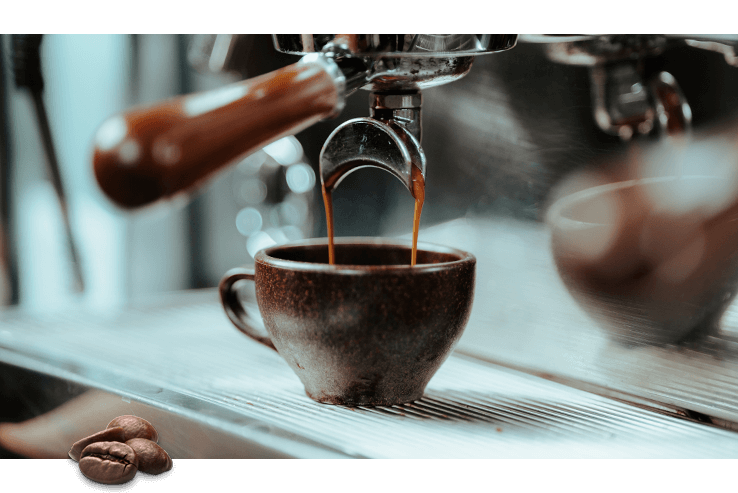Helpful Hints to Get the Best Out of SOE Single Origin Espresso
Helpful Hints to Get the Best Out of SOE Single Origin Espresso
Blog Article
Exploring the Abundant Tastes of Coffee Beans: a Deep Study Coffee and Blended Coffee Beans
When you discover the rich tastes of coffee beans, you discover an intricate globe where each range brings its own personality to your cup. Recognizing the origins, refining approaches, and roasting methods can change your coffee experience. As you browse via the art of coffee and the imagination behind mixed coffees, you'll begin to appreciate the subtleties that make each sip one-of-a-kind. What you'll find following might change the method you enjoy your morning brew.
The Origins of Coffee Beans: Checking Out Terroir and Flavor Profiles
When you take a sip of coffee, you're not just taking pleasure in a drink; you're experiencing a rich tapestry of tastes shaped by the beans' origins. Each area generates distinct taste accounts affected by environment, altitude, and dirt. As an example, beans from Ethiopia usually burst with brilliant, fruity notes, while those from Colombia tend to offer a balanced, nutty sweetness.
As you explore different origins, you'll notice just how terroir-- the ecological elements affecting a crop-- plays a crucial function - Single Origin Espresso. The same coffee range can taste significantly various relying on where it's expanded
When you consider these elements, you start to appreciate the intricacy behind your mug. Each sip narrates of the land and the farmers who nurtured the beans. So, following time you indulge, think about the trip your coffee took prior to it reached your hands, and savor those detailed tastes that reflect its beginning.
Comprehending Espresso: The Art and Scientific Research Behind the Mixture
When you think of coffee, it's not practically the solid taste; it's additionally regarding the strategies that bring it to life. Understanding exactly how different prep work techniques impact taste can transform your brewing experience. Let's explore the ins and outs of espresso preparation and reveal the one-of-a-kind taste profiles that make each mug unique.
Coffee Preparation Techniques
Espresso preparation is both an art and a scientific research, integrating accurate methods with a deep understanding of coffee. To start, you'll intend to pick high-grade, freshly baked beans and grind them carefully for suitable extraction (Single Origin Espresso). The work dimension is essential; too coarse, and your coffee will be weak, as well great, and it'll be bitter
Next, tamp the premises uniformly in the portafilter to ensure consistent extraction. When you lock it into the maker, go for a brewing temperature level between 190 ° F and 205 °
F.As you pull the shot, watch for the perfect removal time-- around 25-30 secs. The outcome needs to be an abundant, luscious coffee with a gorgeous layer of crema on the top. With technique, you'll master these techniques.
Flavor Accounts Explained
The globe of coffee supplies a rich tapestry of taste profiles that can raise your coffee experience. Light roasts often display bright acidity and vivid flavors, while dark roasts present deeper, bolder tones.
A well-crafted blend may integrate the intense notes of an Ethiopian bean with the abundant, chocolatey undertones of a Brazilian bean. Embrace the journey of uncovering espresso's diverse tastes, and you'll change your coffee routine right into an amazing journey.
Processing Methods: Exactly How They Impact Flavor and Fragrance
While it might seem that the beginning of coffee beans is one of the most considerable consider establishing their taste and fragrance, the handling approaches made use of post-harvest play an equally essential role. You'll find that these techniques can substantially alter the last taste account of your cup.
As an example, the washed procedure gets rid of the fruit from the beans before fermentation, commonly resulting in a cleaner, brighter taste. The all-natural process leaves the fruit intact throughout drying, resulting in a sweeter, fruitier profile.
Other approaches, like honey processing, strike a balance, enabling some fruit mucilage to stay, offering an unique complexity.
Each handling technique engages with the beans' fundamental attributes, boosting or silencing certain tastes and scents. So, when you drink that coffee or combined coffee, bear in mind that the journey from cherry to cup is affected not just by origin however also by just how those beans were refined.
Roasting Techniques: Opening the Full Prospective of Coffee Beans
Roasting techniques are crucial for revealing the complete potential of coffee beans, as they change raw, environment-friendly beans right into the aromatic, savory coffee you enjoy. The option of toasting technique-- light, tool, or dark-- considerably affects flavor profiles. Light roasts maintain the beans' natural acidity and Check This Out fruity notes, while medium roasts balance sweet taste and richness. Dark roasts, on the various other hand, highlight strong, smoky tastes.
A slower roast at lower temperature levels permits for complicated tastes to establish, while a quicker roast can escalate resentment. By grasping these methods, you'll reveal a world of flavor, boosting your coffee experience to brand-new elevations.
The Magic of Blended Coffee: Creating Unique Taste Experiences
Creating a special flavor experience with combined coffee can change your morning routine into an exploration of preference. By combining various beans from various regions, you can reveal a harmony of flavors that raise your cup to brand-new elevations. Each mix deals an unique profile, balancing acidity, body, and sweet taste to develop something truly special.
When you select a blend, you're not simply selecting a coffee; you're choosing a journey throughout varied landscapes and societies. Trying out with various combinations enables you to discover your individual faves, whether you take pleasure in fruity notes or rich, chocolatey undertones.

Sampling Notes: Identifying the Nuances in Your Cup
As you drink your coffee, you may notice a spectrum of tastes dancing on your palate, each disclosing the complexities of the beans. You might taste the intense acidity evocative citrus or the deep, abundant notes similar to dark delicious chocolate. The sweet taste might evoke honey or caramel, balancing the overall profile perfectly.
Pay attention to the body of the coffee-- does it really feel airy and light, or is it full and luscious? The coating, too, supplies ideas; a lingering aftertaste might mean nuttiness or floral undertones.

Do not fail to remember to discover the unique qualities of various beginnings, as each region imparts unique tastes - Single Origin Espresso. For instance, Ethiopian coffees frequently existing fruity notes, while Colombian beans may showcase an extra spherical sweet taste. By identifying these nuances, you'll strengthen your gratitude for each and every cup, elevating your coffee experience to brand-new elevations

Developing Methods: Maximizing Flavor Extraction for Every Bean
When you explore the various developing approaches, you'll uncover that each method can dramatically affect the flavor profile of your coffee. From French press to pour-over, each approach extracts different substances, improving or muting specific notes. Utilizing a French press enables oils to continue to be in the brew, developing a richer taste, while pour-over emphasizes clearness and illumination.
Temperature level and grind size likewise play important roles. A coarser grind functions best for chilly mixtures, while a great work is ideal for coffee. Try out water temperature level-- in between 195 ° F and 205 ° F-- can disclose concealed tastes, also.
Do not fail to remember regarding steeping time; a fast removal can result in sour notes, while over-extraction may generate bitterness. By adjusting these variables, you can optimize taste removal and really boost your coffee experience. Appreciate the journey of uncovering what method ideal more matches your taste!
Often Asked Inquiries
What Is the Suitable Water Temperature for Brewing Coffee?
The perfect water temperature for developing coffee's between 195 ° F and 205 ° F. If you use water that's as well warm, you'll over-extract flavors; also cold, and you will not extract enough. Go for that pleasant place for the very best mixture!
Just How Does Work Dimension Affect Coffee Taste?
Grind dimension considerably affects coffee taste. Finer grinds remove extra oils and flavors, causing a bolder preference, while coarser grinds yield a lighter flavor. Adjusting grind size helps you accomplish your desired coffee account.
Exist Wellness Perks Linked With Drinking Coffee?

What Is the Difference Between Arabica and Robusta Beans?
Arabica beans are smoother and sweeter, often featuring fruity tastes, while robusta beans are stronger with a bitter preference and higher caffeine material. You'll see these distinctions in fragrance and developing experience.
Just How Can I Store Coffee Beans for Freshness?
To save coffee beans for freshness, maintain them in an airtight container, far from light, warm, and dampness. You'll keep their flavor longer if you just grind what you need right before developing.
Exploring the Rich Tastes of Coffee Beans: a Deep Dive Into Espresso and Blended Coffee Beans.
When you explore the rich flavors of coffee beans, you reveal a complicated globe where each selection brings its very own personality to your mug.When you take a sip of coffee, you're not simply taking pleasure in a beverage; you're experiencing an abundant tapestry of tastes formed by the beans' beginnings.Roasting techniques are crucial for exposing the complete capacity of coffee beans, as they change raw, eco-friendly beans into the aromatic, savory coffee you take pleasure in.As you sip your coffee, you may notice a spectrum of tastes dancing on your taste buds, each disclosing the complexities of the beans.
Report this page